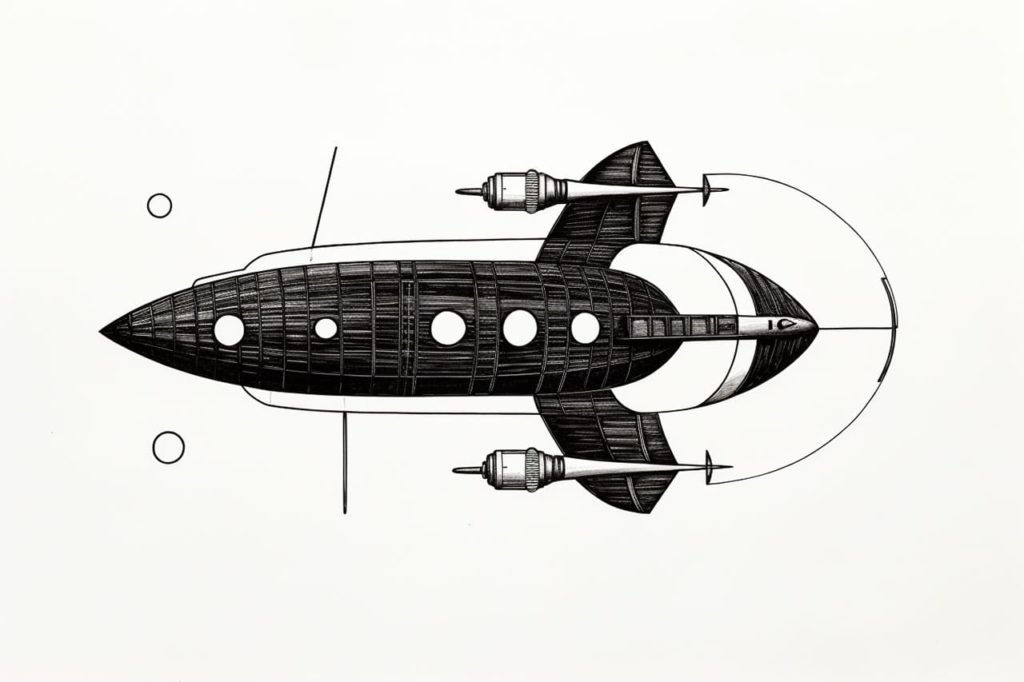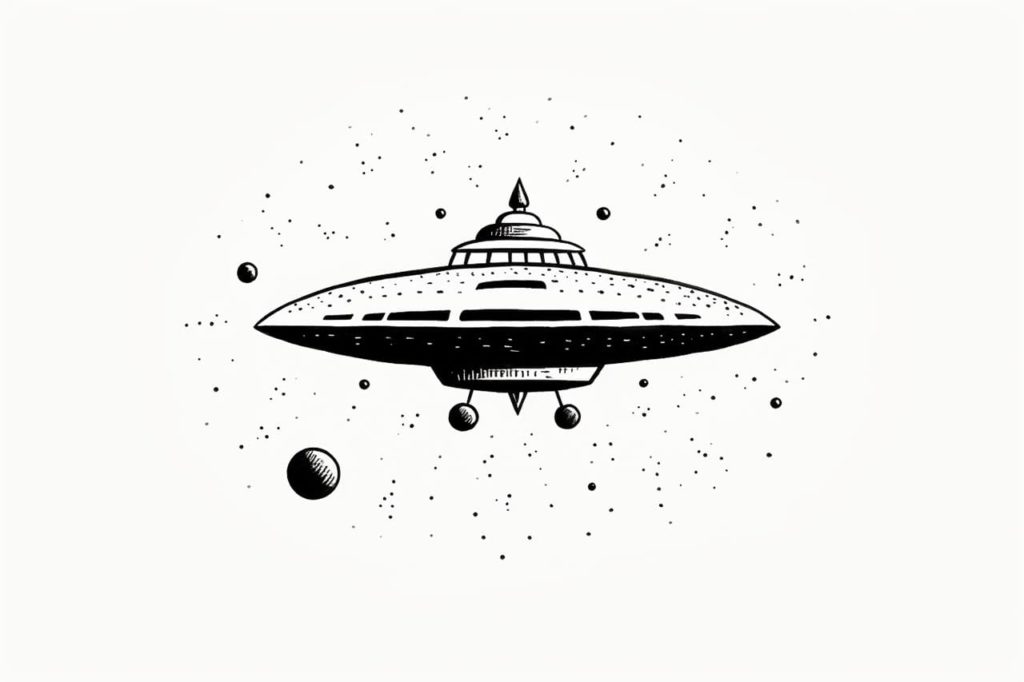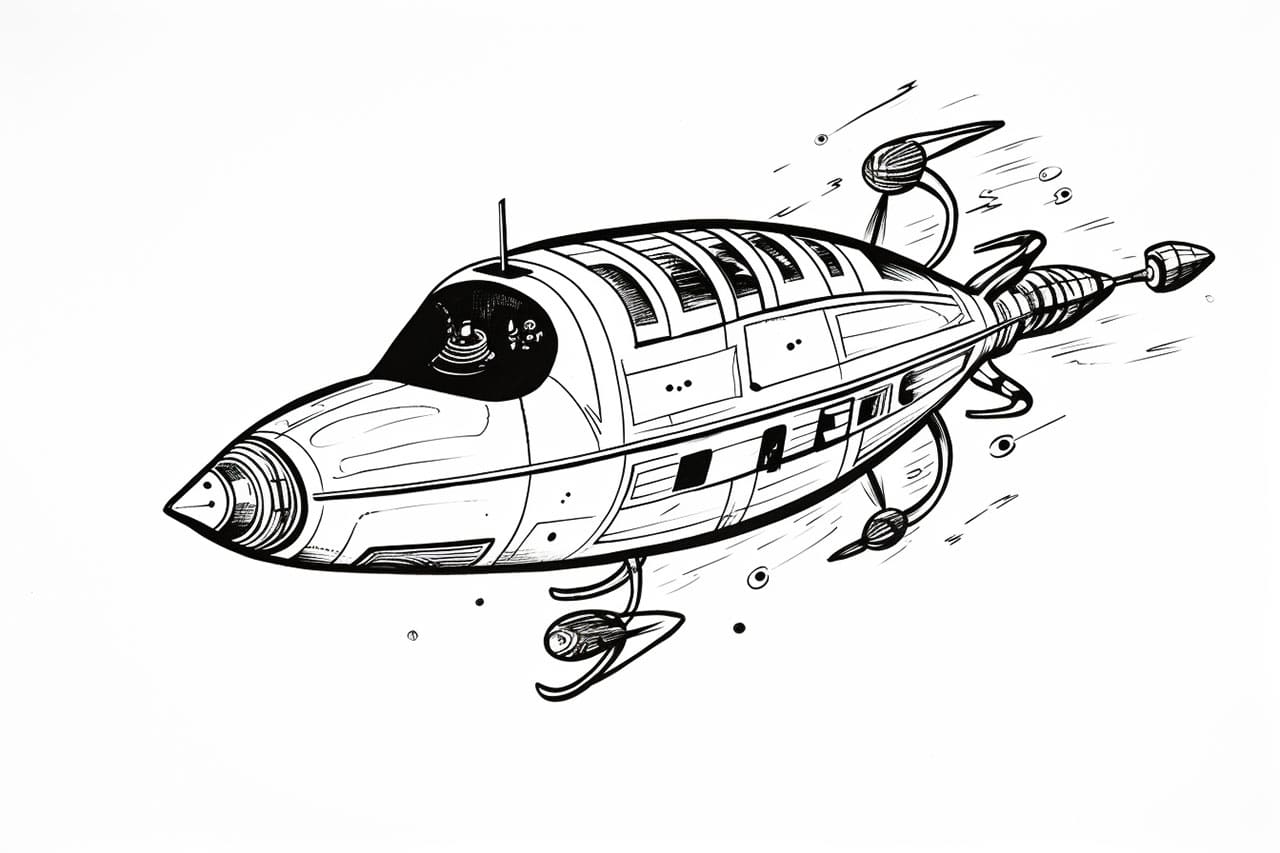Welcome to this step-by-step guide on how to draw a spaceship! Whether you are a beginner or an experienced artist, this tutorial will help you create a realistic and detailed spaceship drawing. So grab your drawing materials and let’s get started!
Materials Required
To draw a spaceship, you will need the following materials:
- Drawing paper or sketchbook
- Pencils (ranging from H to B for different shades)
- Eraser
- Ruler
- Compass (optional, for creating circular shapes)
- Colored pencils or markers (optional, for adding color to your drawing)
Now that we have our materials ready, let’s dive into the step-by-step process of drawing a spaceship.
Step 1: Prepare Your Workspace
Find a comfortable and well-lit area to work on your drawing. Make sure you have enough space to move your arm freely and place all your materials within reach. This will allow you to create your spaceship drawing with ease and precision.
Step 2: Start with Basic Shapes
Begin by sketching the basic shapes that make up the structure of the spaceship. Start with a large oval or rectangle shape for the body of the spaceship. This will be the main part of the spacecraft. Then, add smaller shapes for the cockpit, wings, and any other details you want to include.
Step 3: Refine the Shape and Add Details
Once you have the basic shapes in place, use your pencil to refine the overall shape of the spaceship. Add more details and dimensions to the body and the different components of the spacecraft. Pay attention to the proportions and make sure everything looks balanced.
Step 4: Add Texture and Surface Details
Next, it’s time to add texture and surface details to your spaceship drawing. You can create the appearance of metal by adding lines, hatching, or cross-hatching to certain areas. Consider adding rivets, bolts, and other small details that give your spaceship a realistic and industrial look.
Step 5: Sketch the Background
To make your spaceship drawing more interesting, consider sketching a background. You can draw stars, planets, or a distant galaxy to create a sense of depth and space. This will also provide some context for your spaceship and make it stand out even more.
Step 6: Refine and Finalize
Once you are satisfied with the overall look of your spaceship drawing, take some time to refine and finalize it. Use an eraser to clean up any stray lines or smudges. Adjust the shading and add more depth to certain areas to make the spaceship appear three-dimensional.
Step 7: Add Color (Optional)
If you prefer a colored spaceship drawing, this is the time to bring out your colored pencils or markers. Use a light touch and build up the color gradually. Consider using different shades to create highlights and shadows, giving your spaceship a more vibrant and realistic appearance.
Conclusion
Congratulations on completing your spaceship drawing! By following these step-by-step instructions, you have created a detailed and captivating illustration. Remember, practice makes perfect, so don’t hesitate to try drawing different types of spaceships or experiment with your own designs. Enjoy the journey of exploring your creativity and have fun drawing!
Gallery of Spaceship Drawings



Fun Facts about Spaceships
Spaceships, also known as spacecraft, are marvels of human engineering and imagination, designed to operate outside the Earth’s atmosphere. Here are some fun and interesting facts about them:
- Types and Purposes: Spaceships come in various types, including satellites, space probes, space shuttles, and manned spacecraft. Each serves different purposes, from Earth observation and communications to exploring distant planets and stars.
- First Man-made Object in Space: The first man-made object to reach space was the V-2 rocket, designed by the Germans during World War II. Post-war, this technology laid the groundwork for early space exploration.
- Sputnik 1: Launched by the Soviet Union on October 4, 1957, Sputnik 1 was the first artificial satellite to orbit Earth, marking the beginning of the space age and leading to the space race between the USSR and the USA.
- Apollo 11: This mission made history on July 20, 1969, when Neil Armstrong and Buzz Aldrin became the first humans to land on the Moon. The famous words, “That’s one small step for man, one giant leap for mankind,” were broadcast to Earth from the lunar surface.
- International Space Station (ISS): A symbol of international cooperation, the ISS is a habitable artificial satellite that has been continuously occupied since November 2000. It serves as a microgravity and space environment research laboratory.
- Voyager Probes: Launched in 1977, Voyager 1 and Voyager 2 have traveled beyond the solar system into interstellar space, sending back invaluable data about the outer planets and beyond.
- Space Shuttle: The Space Shuttle was a reusable spacecraft that took astronauts to orbit and back from 1981 to 2011. It was used to deploy satellites, conduct science experiments, and help construct the ISS.
- Fastest Man-made Object: Parker Solar Probe, launched in 2018, is on its mission to study the Sun closely. It’s expected to reach speeds of up to 430,000 mph, making it the fastest man-made object ever.
- SpaceX’s Reusable Rockets: SpaceX has revolutionized space travel with its reusable rocket technology, significantly reducing the cost of access to space. Its Falcon rockets can land back on Earth after launching payloads into orbit.
- Space Junk: There are millions of pieces of space debris orbiting Earth, including old satellites, spent rocket stages, and fragments from collisions. This poses a risk to operational spacecraft and satellites.
- Longest Time in Space: Russian cosmonaut Valeri Polyakov holds the record for the longest single stay in space, spending over 14 consecutive months aboard the Mir space station from January 1994 to March 1995.
- New Horizons: This spacecraft gave us our first close-up look at Pluto in 2015, traveling over 3 billion miles to reach the dwarf planet and continuing into the Kuiper Belt, a region of ancient, icy objects in the outer solar system.
These facts showcase the incredible achievements and ongoing advancements in spacecraft technology and space exploration, highlighting humanity’s enduring fascination and ambition to explore the cosmos.









